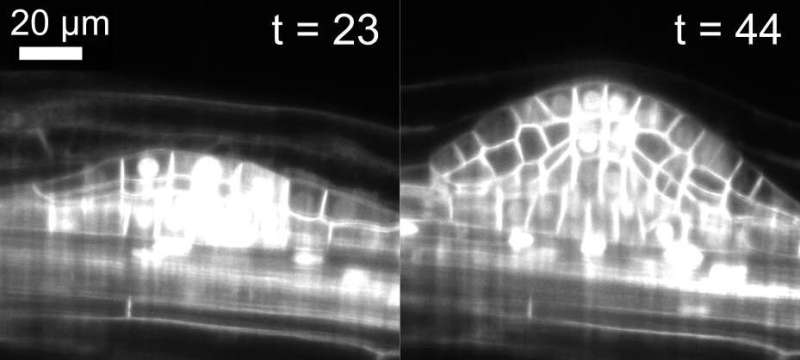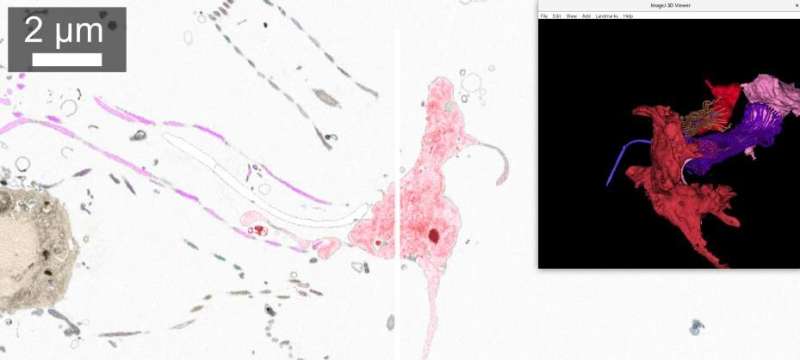This article has been reviewed according to Science X's editorial process and policies. Editors have highlighted the following attributes while ensuring the content's credibility:
fact-checked
peer-reviewed publication
trusted source
proofread
MoBIE enables modern microscopy with massive data sets

High-resolution microscopy techniques, for example electron microscopy or super-resolution microscopy, produce huge amounts of data. The visualization, analysis and dissemination of such large imaging data sets poses significant challenges.
Now, these tasks can be carried out using MoBIE, which stands for Multimodal Big Image Data Exploration, a new user-friendly, freely available tool developed by researchers from the University of Göttingen and EMBL Heidelberg. This means that researchers such as biologists, who rely on high-resolution microscopy techniques, can incorporate multiple data sets to study the processes of life at the very smallest scales. Their method has now been published in Nature Methods.
MoBIE was initially developed to make a high-resolution "map" of cells in Platynereis dumerilii, a small worm that serves as a model organism for evolution. This map combines electron microscopy data of one worm with genetic expression profiles, measured in about 50 worms. Combining this information allows very detailed comparison of morphology and gene expression, with the ultimate goal to better understand animal cell types and their evolution.
Integrating this enormous data set, which consists of 10 Terabytes of data from different sources, proved difficult with existing tools. Hence MoBIE was developed to enable direct access to the data from any laptop, without requiring programming knowledge. After the initial publication of the cellular map, the team realized that the potential of MoBIE could benefit many other applications in microscopy.
The researchers therefore extended its functionality to support more types of imaging data for example: high-throughput screening microscopy, which is commonly used in drug discovery; and spatial transcriptomics, which is used for very detailed gene expression analysis. MoBIE is already being used for data analysis and sharing in several other fields.
MoBIE now permits visualization and analysis of large image data from hundreds of sources, as well as reconstructions of structures in the data, such as cells or organelles. It can access this data on demand in the cloud, permitting direct access to any researcher without the need to first download terabytes of data.
This functionality enables data visualization and analysis for large and diverse datasets that was previously only possible with more specialized tools and computational knowledge, opening up the ability to analyze and interpret large amounts of microscopy data to many research groups all over the world.

"My group develops methods that help biologists answer their research questions from microscopy data. Before MoBIE, sharing these results was difficult: they would need to download a lot of data and use tools that were hard to install. Now we can share the data through this user-friendly tool directly with them," says Professor Constantin Pape. Pape started this research at EMBL Heidelberg, as a postdoc and has continued at the University of Göttingen.
MoBIE is available as open-source software, and can be installed as a Plugin to Fiji which is a widely used toolbox for microscopy.
More information: Constantin Pape et al, MoBIE: a Fiji plugin for sharing and exploration of multi-modal cloud-hosted big image data, Nature Methods (2023). DOI: 10.1038/s41592-023-01776-4
Journal information: Nature Methods
Provided by University of Göttingen



















